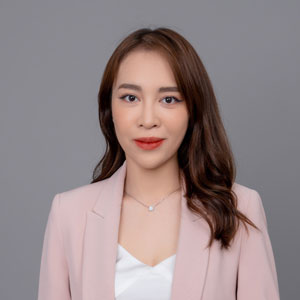No courses in the enrolment list.
Setting a score target before starting your PTE study journey is always the key to success.
However, you should be familiar with the PTE score chart to understand your English proficiency level and perform well in your upcoming exam.
We will give you the most updated PTE score chart, introduce the PTE scoring system, and explain how PTE scores are calculated.
Let’s dive deeper!
|
How to FINALLY Pass the PTE and Achieve Your Dreams
Stop guessing! Start using proven methods that guarantee results!
✅ Master Every Section: Discover INSIDER SECRETS that secure HIGH SCORES. ✅ Save Time & Effort: Study SMARTER with proven strategies for FAST results. ✅ Real Practice, Real Confidence: Practice with TEST-LIKE questions to feel FULLY PREPARED.
START YOUR PTE SUCCESS JOURNEY TODAY
|
Key Takeaways
- The PTE score chart is a detailed summary of the PTE Academic test’s overall and sectional scores.
- The PTE machine-scoring system is entirely automated by advanced algorithms and works without the instructor’s presence.
- The tables below show the PTE score chart to help you understand each score.
Related:
- See our PTE master training that can fast-track you to 79+ effortlessly!
- PTE exam preparation master guide
What is a PTE score chart?
The PTE score chart is a detailed summary of the PTE Academic test’s overall and sectional scores. It uses the Global Scale of English (a detailed scale of 10–90).
The chart describes the available scores, what they represent, and what skills they reflect to demonstrate a test taker’s English proficiency level accurately and objectively.
The PTE score chart aims to provide a consistent and fair method to assess all English skills in the PTE tests. They include vocabulary, grammar, oral fluency, pronunciation, spelling, communication, and writing skills.
Universities and visa services worldwide can use the latest PTE score chart as a criterion for assessing candidates. That is why it is critical to understand the PTE score chart and how it works.
See more:
- How to check your PTE scores easily
- PTE Rescore: Policies, Success Rate and Risks
- Negative marking in PTE
PTE scoring system – How are PTE results calculated?

Pearson employs multiple proprietary, patented technologies to automatically measure PTE test takers’ overall performance.
The PTE machine-scoring system is entirely automated by advanced algorithms and works without the instructor’s presence. This reduces stress, simplifies the scoring process, and makes it more equal and consistent.
The scoring automation relies on thousands of sample questions assessed by examiners and entered into a sophisticated algorithm.
Data has been gathered from over 10,000 field test participants from 158 countries speaking 126 different native languages.
Therefore, your responses are evaluated based on numerous former answers and examiners’ combined expertise to give you the final score with the most pinpoint accuracy.
The PTE Academic test has 20 question types. Each is assigned a different score method. To be more specific, there are two PTE scoring systems:
- Correct or incorrect: Some tasks receive a score as correct or incorrect.
If you answer correctly, you will get 1 point, if you answer incorrectly, no points are given.
- Partial Credit: Other tasks receive scores of correct, partially correct, or incorrect
You will earn the maximum scores if your answers to these questions are correct. You will earn some points if your answers are only partially correct. No points are awarded for incorrect responses.
Here are the scoring systems for each PTE section:
Scoring PTE Speaking & Writing section
Section |
PTE Scoring System |
Read Aloud |
Partial credit |
Repeat Sentence |
Partial credit |
Describe image |
Partial credit |
Re-tell lecture |
Partial credit |
Answer Short Questions |
Correct or Incorrect |
Summarize Written Text |
Partial credit |
Writing Essay |
Partial credit |
Scoring PTE Reading section
Section |
PTE Scoring System |
Reading and writing: Fill in the blanks |
Partial credit for each correctly completed blank |
Multiple-choice, choose multiple answers |
Partial credit for each correct response. Points are deducted for incorrect options chosen |
Re-order paragraphs |
Partial credit for each correctly ordered, adjacent pair |
Reading: Fill in the blanks |
Partial credit for each correctly completed blank |
Multiple-choice, choose a single answer |
Correct or Incorrect |
Multiple-choice, choose multiple answers |
Partial credit for each correct response. Points are deducted for incorrect options chosen |
Scoring PTE Listening section
Section |
PTE Scoring System |
Summarize spoken text |
Partial credit |
Multiple-choice, choose multiple answers |
Partial credit for each correct response. Points are deducted for incorrect options chosen |
Fill in the blanks |
Partial credit for each correct word spelled correctly |
Highlight correct summary |
Correct or Incorrect |
Multiple-choice, choose a single answer |
Correct or Incorrect |
Select missing word |
Correct or incorrect |
Highlight incorrect words |
Partial credit for each word. Points are deducted for incorrect options chosen |
Write from dictation |
Partial credit for each word spelled correctly |
For more details, you can download the full PTE scoring guide here.
So, how do you calculate the PTE score?
The overall PTE score is determined by analyzing performance across all test tasks.
PTE Communicative Skills scores for four skills: reading, writing, speaking, and listening. Each skill has a scoring range of 10 to 90.
Some tasks examine more than one single skill at once. They are “Integrated skills” tasks, evaluating reading and speaking, listening and speaking, reading and writing, listening and writing, or listening and reading).
The scores on these tasks add to the score for both communicative skills assessed at the same time.
See more:
PTE score ranges and your level of English proficiency
PTE score ranges from 10 to 90.
The table below shows the PTE score chart to help you understand what each PTE score represents:
PTE score range |
CEFR equivalent |
Required for |
Skill representation |
85-90 |
C2 |
Not typically required for university admissions or visa applications. |
This is the highest English proficiency level in the PTE exam.
This scoring range measures the ability to:
|
76–84 |
C1 |
Required for Australian Skilled Migration visa applications.
Not typically required for undergraduate courses. |
This is a very proficient proficiency level. This scoring range measures the ability to:
|
59–75 |
B2 |
Require for
|
This scoring range measures the ability to:
|
43–58 |
B1 |
Typically required for undergraduate-level study. |
This scoring range measures the ability to:
|
30–42 |
A2 |
May be required for Foundation Year courses.
This score range is typically too low for academic education. |
This scoring range measures the ability to:
|
10–29 |
A1 |
This scoring range is typically too low for academic or Foundation Year courses. |
This scoring range measures the ability to:
|
Additionally, if you are curious about the conversion between PTE and IELTS or TOEFL, check the two tables below.
PTE and IELTS score comparison table
PTE Academic |
IELTS |
N/A |
9.0 |
89–90 |
8.5 |
84–88 |
8.0 |
76–83 |
7.5 |
66–75 |
7.0 |
56–65 |
6.5 |
46–55 |
6.0 |
36–45 |
5.5 |
29–35 |
5.0 |
23–28 |
4.5 |
10–22 |
No data |
See more:
PTE and TOEFL score comparison table
PTE Academic |
TOEFL iBT |
PTE Academic |
TOEFL iBT |
85-90 |
No data |
61 |
90 |
84 |
120 |
60 |
89 |
83 |
119 |
59 |
87–88 |
82 |
118 |
58 |
86 |
81 |
117 |
57 |
85 |
80 |
115–116 |
56 |
83–84 |
79 |
114 |
55 |
82 |
78 |
113 |
54 |
81 |
77 |
112 |
53 |
79–80 |
76 |
110–111 |
52 |
78 |
75 |
109 |
51 |
76–77 |
74 |
107–108 |
50 |
74–75 |
73 |
106 |
49 |
72–73 |
72 |
105 |
48 |
70–71 |
71 |
103–104 |
47 |
67–69 |
70 |
102 |
46 |
65–66 |
69 |
101 |
45 |
63–64 |
68 |
99–100 |
44 |
60–62 |
67 |
98 |
43 |
57–59 |
66 |
97 |
42 |
54–56 |
65 |
95–96 |
41 |
52–53 |
64 |
94 |
40 |
48–51 |
63 |
93 |
39 |
45–47 |
62 |
91–92 |
38 |
40–44 |
10-37 |
No data |
FAQs
What is the maximum score for a PTE test?
PTE maximum score is 90. Each PTE test has a score range of 10 to 90 based on the Global Scale of English. A score of 90 indicates the highest level of overall English proficiency.
Why are PTE results scored using automated systems?
Research shows that an AI-powered scoring system produces more analytical, impartial results than human scoring.
An automated scoring system is more unbiased and error-free than human judgment influenced by various factors. Besides, it makes a seamless scoring process and reduces human tasks to make consistent and fair PTE scores.
How long should you wait for your PTE scores?
A maximum of five business days, if not sooner.
PTE results are typically available in five business days, if not sooner. Once your PTE score is out, PTE will send you an email notification. You can access your myPTE account to view your results.
Conclusion
Have you mastered the PTE score chart? It’s time to set a goal and predict your potential overall score.
Practicing PTE mock tests is a great way to get the most accurate prediction score possible.
PTE Magic provides a practice test bank to help you assess your English proficiency level and build a study plan effectively. Contact us to get it now!
|
How to FINALLY Pass the PTE and Achieve Your Dreams
Stop guessing! Start using proven methods that guarantee results!
✅ Master Every Section: Discover INSIDER SECRETS that secure HIGH SCORES. ✅ Save Time & Effort: Study SMARTER with proven strategies for FAST results. ✅ Real Practice, Real Confidence: Practice with TEST-LIKE questions to feel FULLY PREPARED.
START YOUR PTE SUCCESS JOURNEY TODAY
|
Last updated on 10/03/2025

My name is Moni, and I am a seasoned PTE teacher with over 6 years of experience. I have helped thousands of students overcome their struggles and achieve their desired scores. My passion for teaching and dedication to my student’s success drives me to continually improve my teaching methods and provide the best possible support. Join me on this journey toward PTE success!



























I am a firm believer that the best teachers educate with their hearts not just their minds.
Moni | PTE MAGIC International Founder
Explore PTE
Tips & Tricks
If you’re planning to move to Australia, this checklist for moving to Australia as an...
Read more →Which is the best English test for Australian immigration? This blog will explain the importance...
Read more →How to find a job in Australia as an international student? This blog by PTE...
Read more →